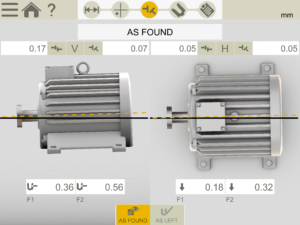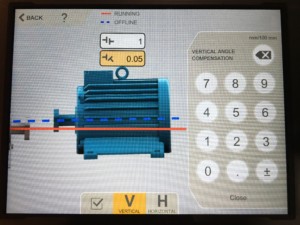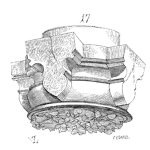
We will create a reorder point analysis file from scratch with simple CMMS data as our starting point. Learn how to create a file which will update automatically each time CMMS data is updated.
[Read more…]Your Reliability Engineering Professional Development Site
A listing in reverse chronological order of these article series:
by George Williams Leave a Comment

We will create a reorder point analysis file from scratch with simple CMMS data as our starting point. Learn how to create a file which will update automatically each time CMMS data is updated.
[Read more…]by Robert (Bob) J. Latino Leave a Comment

Where does ‘failure’ come from? Why do some things not go as we planned? When bad things happen, at that time, it can be chaotic and appear very complex. Often, in hindsight (when the urgency has faded), we find that good people made bad decisions at that time. Most of the time such failures were not complicated and we find that most likely, anyone else put in the same position, would have made the same decision. So why do things not always go as planned?
by James Kovacevic Leave a Comment
 How many times has an asset been installed or commissioned, only to have it fail in a few days or months when it should have lasted even longer? If you look at the study by Nowlan & Heap, they have found that only 11% of failures are age related, so when is happening with these assets? The answer… comes down to poor installation practices.
How many times has an asset been installed or commissioned, only to have it fail in a few days or months when it should have lasted even longer? If you look at the study by Nowlan & Heap, they have found that only 11% of failures are age related, so when is happening with these assets? The answer… comes down to poor installation practices.
[Read more…]
by Alex Williams Leave a Comment

From demonstrating compliance and ensuring safety to maintaining assets and increasing productivity, food manufacturing maintenance managers have their work cut out for them. Thankfully, computerized maintenance management software (CMMS) can streamline processes and improve maintenance operations for the food manufacturing industry. Read on to learn how food manufacturing CMMS software can significantly benefit your organization.
[Read more…]by James Reyes-Picknell Leave a Comment

Like the human body, our plant and mobile equipment will break down if it’s not looked after. If we exercise and push ourselves harder, we gain strength. Unlike our biological bodies that can self-repair, our physical plants and mobile equipment do NOT strengthen if we overload them. Yes, they will tolerate some abuse but not for long. Machinery, unlike biological organisms, can not recover from damage on its own. It needs a bit of basic care. Basic care is all about taking care of our physical assets so they continue to do what we need them to do. Take care of their fluids (e.g.: oils, coolants), keep them from running hot (e.g.: clean heat transfer surfaces like cooling fins), and keep them free of contaminants that damage their insides (e.g.: keep moisture and dirt out). In the “Uptime Pyramid of Excellence,” the pinnacle is “Choosing Excellence”. That choice implies an active application of all of the model’s components. It’s a journey, not a destination.
by George Williams Leave a Comment
by Robert (Bob) J. Latino Leave a Comment

Trick question, it’s neither!
When we hear people use the term ‘error’ it is normally associated with being the cause of some type of bad outcome. We hear it all the time with airline accidents where they conclude ‘pilot error’.
‘Error’ is neither the cause nor the undesirable outcome! Let’s see why.
Is the only type of error a ‘human error’? I struggled to think of an ‘error’ that is not a human error, so I asked if others could think of something else. I would like to thank Dr. Peter Elias who commented that errors can occur in biologic processes, such as RNA and DNA replication or messaging. He also cited non-human animals make errors all the time as well.
by James Kovacevic Leave a Comment
 A major asset is being installed, and the asset is vital to the success of a brand new, high-profit product being introduced to the site. This product is enough to keep the site operational for many years to come. The installation of the asset is critical, and there is extensive prep work to eliminate soft foot, ensuring the base is flat (using geometric measurement) and that the asset is aligned properly.
A major asset is being installed, and the asset is vital to the success of a brand new, high-profit product being introduced to the site. This product is enough to keep the site operational for many years to come. The installation of the asset is critical, and there is extensive prep work to eliminate soft foot, ensuring the base is flat (using geometric measurement) and that the asset is aligned properly.
[Read more…]
by James Reyes-Picknell Leave a Comment

There are two things you must do in a successful maintenance program: be good at doing your work, and only do the right work. Both are needed to deliver asset reliability – the cornerstone of sustainable, safe and quality production levels. In chasing reliability many turn to programs for defining the right work, yet many of those efforts will fail. Why? Poor or ineffective planning. The greatest benefits come from defining the right maintenance program using RCM and then implementing with quality work and on schedule.
Failure of reliability improvement programs can be from poor execution of RCM, but more often it is the result of something more basic. They are stuck in a culture of unreliability. [Read more…]
by George Williams Leave a Comment

In all the years of facilitating RCFA, what seems like the easiest part has proven to be one of the most challenging. Documenting the problem statement. It is human nature is to immediately develop an opinion and provide a solution. When a group of people are put in a room together for an RCFA they immediately believe they are there to solve THE problem. This leads to a focus on solutions to the event as it occurred. The team gathers in the room and the facilitator asks what the problem statement is, and the replies tell it all. “Jane, the operator, hit the wrong button.” “The technician didn’t know how to install the bearing.” “Poor lubrication.” Sound familiar?
[Read more…]by Robert (Bob) J. Latino Leave a Comment

If you’ve ever led a Root Cause Analysis (RCA) Team, you will relate to this article. Being an effective RCA analyst is tough work in the healthcare (HC) industry. It is fraught with administrative, technical and political hurdles that continually erode our will to be effective, in spite of these barriers. However, for those ‘driven’ analysts, they just rise to the challenge and find a way to go over or through these often mental barriers, because the end game is the patient’s safety and it is worth it!
by James Kovacevic Leave a Comment
 As the kids go back to school, maintenance, reliability, and asset management professional resume their professional learning. This learning usually takes place at one of the numerous world-class conferences available across North America and internationally. These conferences allow professionals to observe and connect with the latest tools, technology, and techniques in our amazing profession.
As the kids go back to school, maintenance, reliability, and asset management professional resume their professional learning. This learning usually takes place at one of the numerous world-class conferences available across North America and internationally. These conferences allow professionals to observe and connect with the latest tools, technology, and techniques in our amazing profession.
Sometimes it is difficult for the maintenance, reliability, and asset management professionals to get the approval or funding to attend the conference. Some organizations look at these events as a week of vacation, where there is little to no value from attending the conference. Changing this perception is not an easy task, but can be started by having an intention for the conference.
[Read more…]
by James Reyes-Picknell Leave a Comment

Reliability depends on the right maintenance being done the right way, and at the right times. At the core of making that happen is the work management process. It is a six step process that’s fairly simple, but often not followed very well. Without, workforce deployment becomes reactive to emergencies and maintenance costs are high. Work done in those reactive situations is anywhere from 1.5 to 3 times as expensive as work that is fully planned and executed on schedule. In some industries the cost of emergency work is even higher. [Read more…]
by Joe Anderson Leave a Comment

In order to get a broad, clear picture of where to focus, you have to view your whole plant as a large system of fully manageable processes. No matter your role, your job is to improve plant processes, helping to produce the highest quality product, at the lowest price possible, in the safest manner. In order to see this big picture, you have to be honest and expose true problems within your facility. From that perspective, you will be able to recognize the different types of losses in your plant and how to secure significant gains in productivity by controlling those losses.
[Read more…]by Robert (Bob) J. Latino Leave a Comment

As long as humans are involved in running our organizations, there will be holes (vulnerabilities) in our cheese. This is why I state that we will never have American cheese (no holes) representing our safety systems, because this would imply they would be failsafe and not impenetrable.